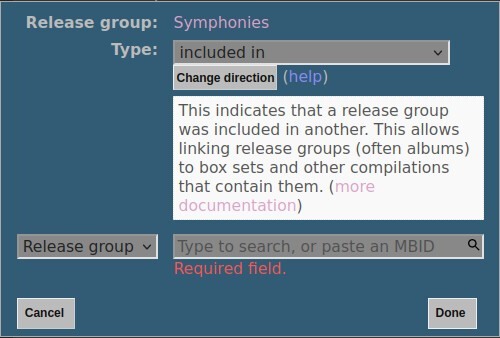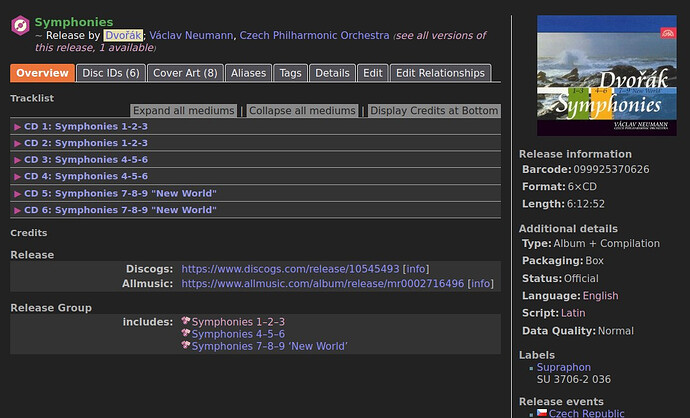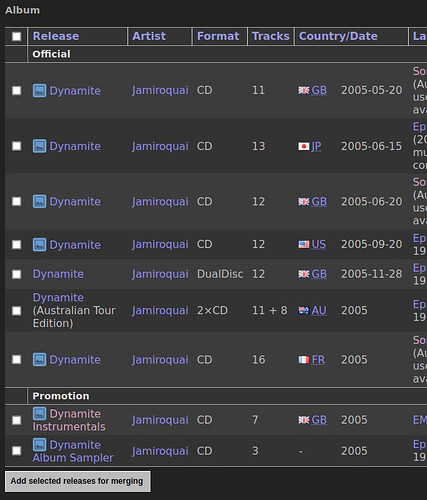Sure, but is a sampler a “promotional version”? We’re talking about 8 non-bonus tracks vs. 34 non-bonus tracks.
Totally. I have five track samplers from 15 track albums. The record company don’t want to give the whole album away, just a taster of the album. But it is all related to that album. It is (or was) a common trick
Frequently, I do (well, not throw it away, but trade it in or give it away). With a few artists that I collect more actively, I may keep both versions. But for example I no longer own any of the Columbia CD releases by Elvis Costello as I have replaced them over the years with the Rykodisc or Rhino reissues.
The point is you care about the editions you own. They are not all inter-changable. I know I am weird and like to keep multiple editions. And if I get my hands on a sampler of an album I know it is an unusual promotional thing not available to the public. I don’t discard it because it has the same tracks as the real album. But it is closely related to that album - it is a promo for the album.
I don’t just collect for the music, but the packaging. The differences are important. For example, I have a comically large number of copies of Dark Side of the Moon. Often because of the different artwork being produced by Storm Thorgerson.
The “do I own X?” question is just a slightly less abstract way of thinking about “Is this a version of X?” Clearly we all agree that the LP, CD, digital etc. releases of an album are all versions of the same thing. There seems to be a general, though by no means absolute, consensus that expanded deluxe editions are also versions of the original album.
To me, a sampler containing less than half of an album’s tracks is not a version of that album. It is related to that album, sure, just like a single or pre-release EP drawn from that album would be, but belongs in a separate RG. But that’s not a hill I’m going to die on if the consensus is otherwise.
[There was a bit of a similar discussion on Highlights releases: same or different RG?]
I kinda feel like these should be their own RGs, linked to the album but hidden by default since they contain only promotional releases. I don’t feel like you can really claim a 5 track sample is at all equivalent to the album itself. In the end though, it probably doesn’t matter much since @IvanDobsky probably has a point that the people who care enough to collect a sampler are also the people who won’t care much about “having this album” but about having specific releases.
You would open yourself a can of worms. If you split a 5 track promo sampler, then you’ll need split a full album promo. Versions supplied to radio stations. And if you split those for albums, then what about other white label singles aimed for radio DJs?
Why have a Promotional section in a release group if you then move them out of sight and away from the main album?
I think these are different to Highlights releases as these promos are not for sale. They are rare items a collector is interested in. A Highlight CD is seen as a separate product sold by the record industry.
I believe the MB guidelines have this correct in the way these are currently categorised.
I’m pretty sure nobody disagrees “same content but promo” should be the same release group. The question is “when does it stop being the album and becomes something else”.
Then we would link this separate RG by a specific sampler relationship or we can bend the single/EP relationship to be used for samplers?
That’s the problem. Open that door and then the deluxe editions will slip out too. If one track missing makes it a promo, then what happens when you add extra bonus tracks. This is just a variation of the album.
Certainly can’t be called singles. Don’t make sense at all as these will be album tracks. Not destined for a single chart. You’d cause chaos in discographies if you put albums in with singles.
I would not argue that one track missing requires a separate RG. Something around 2/3 to 3/4 seems reasonable to me: if a release has 75% or more of the “core” tracks of a release, it’s a version of that release.
I would also factor in how the release is labeled. If two releases have the same title, that’s another indication they belong in the same RG (like the US and UK releases of Rubber Soul , which clearly belong in the same RG even though the US release has only 10 of the original 14 tracks, slightly less than 75%). However, if one release is labeled as “Sampler from…” or “Sneak Peek at…”, that’s an indication they are different animals.
I agree, I found album includes sampler or sampler is included in album is better I think.
And I have cancelled my merge of sampler in album RG.
So the vote was 5-2 in favour of the merge. the merge was as per current guidelines. why cancel it?
There are a HUGE number of samplers already out there that are part of their RG. Following current guidelines.
Why post the discussion in the forum and have a vote if it is abandoned before it gets to the end?
I give up on trying to make sense of this place. Why have guidelines if they are to be ignored?
Take my cancel as the only way I can vote No or Abstain to my own edit.
As I am still in doubt and slightly more agree with keep separate now after reading the responses here.
I found a relationship that can link those 2 release groups in a way that is not semantically incorrect (album includes sampler).
What I wanted is not as it was, I wanted no more 2 unlinked release groups.
This goal is now attained.
If another editor would queue a merge edit, I would not vote No.
A cancelled merge can always be redone later. No harm done.
@ivandobsky, the current guidelines just say “Promotional versions” belong in the same RG. The whole discussion here is whether a sampler taken from the album (generally for promotional purposes) should be treated the same as a copy of the full release stamped “for promotion only”.
One way or another, we should clarify the guidelines - either to say “Promotional versions (including samplers)” or to add samplers to the “what should not be grouped” section.
I don’t think that is correct. The includes/included in parameter is for a release that is also included in a RG that includes other albums. See the help text:

For example, this 6-disc box set includes three 2-disc releases that are/were also sold individually:
If you buy the “Dance of the Rainbow Serpent,” you don’t also get the sampler.
For my money, including promos in the RG with the official releases is logical, and unambiguously displayed in MB:
If I’m asked, “Do you own this album?” my response would be “I have a promo version with tracks.”
First off, I know what includes relationship is primarily made for: often albums (but here a sampler) that are included in bigger ones (often compilations, but here an album). ![]()
Still the album includes the sampler, it has all its tracks (and more). So at least it’s better than no relationships to me, better than annotations too.
So yes, if I buy the album, I do get the sampler (all its tracks).
If I had only a sampler, I would really not consider having the album at all.
I think that’s stretching the use of “include” a little too far. The “sampler” is the disc, not the tracks that happen to also be on the disc.
But we do also use the “includes” relationship for a single “two-fer” CD that compiles two LPs.
wait maybe I misunderstood the relationship, but I thought “includes in” means physically included in a box set, and if the tracklist is abstractly included in, I use the “taken from”.
example: Release “melon” by THE BINARY - MusicBrainz
so I’d use the “taken from” relation in this case, even though the link phrase specifies “single/EP”…

